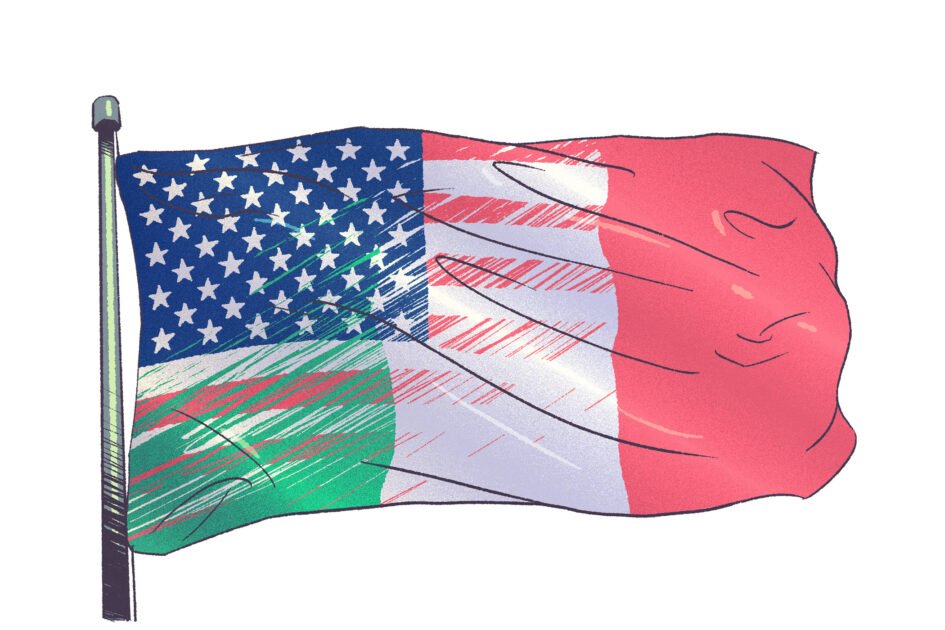Nicola Persico is a professor of managerial economics and decision science at Kellogg. Persico, who grew up in Italy, was thinking about the roots of his home country’s economic struggles when he realized something: they mimicked America’s present. Could the US also be in the early stages of an era of low growth?
Persico talked about this in a recent The Insightful Leader Live webinar. If left unabated, higher taxes and increased regulation, he believes, will push the American economy down.
How did we get here?
If you turn the clock back to the 1990s, Italy was doing quite well economically. In fact, it’s right up there with the US in terms of GDP per capita, which tracks the total value of a country’s goods and services relative to its population. But today, GDP per capita in the US is more than double that of Italy. So why did Italy lose ground?
Professor Persico says one important factor is rising taxes. As a result, Italy is now a much more expensive place to do business compared to other countries, including the US
“For example, in Italy, if you want to hire someone for $100,000, that will cost the company $200,000. The loophole is taxes. In the US, it would cost $130,000. That gives you an idea of how much higher labor costs are in Italy,” says Persico.
But Persico believes there is trouble on the horizon for America.
One of the drivers of higher taxes is rising national debt: when a country’s debt rises, it can lead to tax increases because governments need a source of income to help pay the debt. And what’s worrying for Professor Persico is that the US debt-to-GDP ratio – which is an indicator of whether a country is producing enough goods and services to be able to pay back what it owes – is now hovering above 120 percent.
When Italy began to lose economic ground to the US in the 1990s, The debt-to-GDP ratio was equally high. So when Persico looks at what’s happening in the US today, he sees some of the same forces at play that have caused Italy’s economic growth to slow.
And these powers include something other than taxes and debt.
Regulation on the rise
While government regulation can play an important role in a well-functioning economy, Persico says too much regulation can be costly.
He says that in Italy, it takes an average of eleven days of paperwork to start a business, while in the US it only takes five days. And those differences can really add up.
“The same paperwork in the United States that is enough to start a business is $800 on average. In Italy, it’s $4,000,” says Persico.
But while the US currently has fewer business regulations and bureaucratic hoops to jump through than Italy, Persico sees a worrying trend.
Take the American Code of Federal Regulations, which details laws covering everything from food safety to water skiing in a national wildlife refuge. Since the fifties, the number of pages in this manualit has gone from less than 20,000 to more than 180,000 today. And this increase in the number of pages is a benchmark that federal regulations in the US are increasing. From Persico’s perspective, this is a red flag because when you ask CEOs what’s holding back their companies’ growth, they cite external regulations as one of their main concerns.
“And so, if we want economic growth, it would be good for the U.S. to maintain its source of competitive advantage, which is relatively low regulation,” Persico says.
Rinse and repeat?
From Professor Persico’s point of view, the US economy could be heading down a path of low growth very similar to what Italy has been going through in recent decades. And he came to this conclusion because the US is now beginning to see similar patterns of rising public debt, government regulation and taxation that have hampered Italy’s economy.
One of the most painful indicators? Younger Americans are beginning to worry that they won’t be able to afford the kind of life their parents had. These concerns have been prevalent in Italy for years now.
However, he sees some bright spots for the US. He pointed to a culture of entrepreneurship and innovation along with the role of intellectual property protection that could drive America’s economic growth in the future.
“The United States is really the leader in technological innovation, and a lot of their prosperity comes from that,” says Persico. “So I think innovation helps and is very important. And we need to maintain this driving force of innovation.”
You can watch the rest of Persico’s webinar here.

